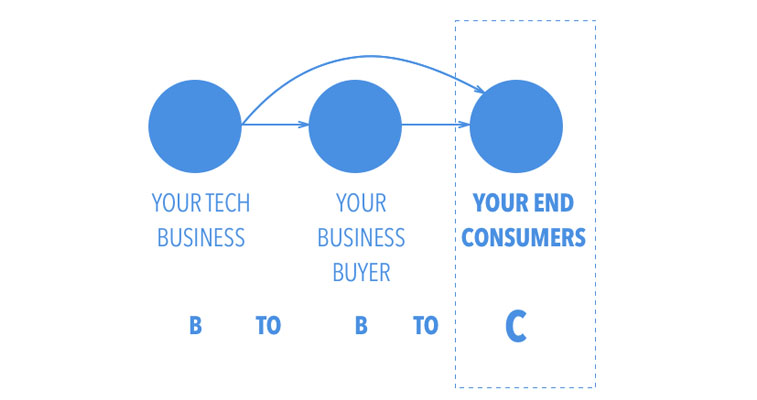The signs are clear that the end of strict “business-to-business” (B2B) products and services is going on life support. In the new Age of the Customer, everything is just “C” because the focus is centered on the end consumer. The final customer is now at the heart of all modern business products. Technology products can no longer be solely designed for business users, they must have the actual final consumers, the “customers of your customer” at the heart of all strategy.
And that experience needs to be awesome.
What does this mean for your business? You might have to take a look into your core product strategy and make sure you have the final consumer in mind. And if not, you are highly encouraged to correct the course before your ship skids to a crash landing.
Here are five critical signs you need to look out for.
1. We don’t know how our product is perceived by the final consumers. Gartner reports that by 2020, customers will manage 85% of their interactions with the enterprise without interacting with a human. As our communication and interactions become increasingly digital, artificial intelligence-fueled algorithms, the need to gather qualitative feedback from actual end users is critical.
If you don’t have end user feedback systems and instead are relying on your buyer to give you this feedback, then you are not getting critical feedback that should be directing your product strategy.
2. The administration site for our business users is klunky and hard to use. A Pew Research Study indicated that millennials surpassed Generation X to become the largest share of the American workforce at 53.5 million. As millennials become your buyers, and their customers, the expectation of any digital tool will be much higher in terms of user friendliness and ease of use.
This trend toward “consumer-ish” portals for businesses and mobile friendly UI for workplace millennials is a significant force I see in today’s software firms that was never a factor in the recent past. Admin portals and management systems were seen as a waste of time to design anything more than a basic interface, that usually looks like $#%&. Not today – modern administration dashboards and portals need to be like using an Uber app.
3. We have limited integrations into modern business tools and services. Long gone are the days when a big business implementation meant a complete vertical value chain of products with one supplier, such as “big blue” IBM. Today, a hybrid “stack” of technologies fuel the greatest companies in the world. Small, nimble companies have the ability to out maneuver the big boys as technology advances speed up.
Slack has hundreds of integrations with popular business tools and apps. Amazon’s Alexa has over 1,900 3rd party services. In the age of the Internet of Things, your product needs to be integrated securely into everything from cars to watches if you wish for large scale.
4. We don’t have a mobile strategy in our product plan. Genwi reports 86% of B2B buyers access business-related content on their mobile devices. This means your business product must have an awesome mobile story. Whether that’s a fully mobile responsive website or a killer app, your customers will be using your product more on their mobile than ever before.
5. We don’t have end user personas or even our buyer personas. Look around your office. Do you see big bold posters of your customers, both buyers and end users? Ideally, you would create a dummy human of your customers and prop them up in every meeting. Jeff Bezos used to leave a chair empty at his important meetings in the early days of Amazon to represent the “seat for the customer”.
If you feel you are suffering from any one of these symptoms, you’re not alone. By centering your strategy around your customers, you will be surprised in the level of engagement will happen over time and that is good for your bottom line. You are probably contemplating a redesign, or refactor, or refresh of your product anyway, right?
Apologize Later
My advice would be just go for it. Here is the down-and-dirty plan to implementing the first round changes before you become obsolete.
-
Pull together a business case to get approval. Your business case is “we either change and survive or tread water until we drown”.
-
Select a customer-centered design team to paint the picture of your customers, their needs, and habits.
-
Validate customer behaviors through research and testing.
-
Marry the business goals of your enterprise with the behaviors of your customers.
-
Evaluate the gaps your product has in serving these needs.
-
Project budget, projected timeline, and resource plan to complete.
-
Implement solution and get feedback.
Look forward to seeing you in the Age of the Customer!

